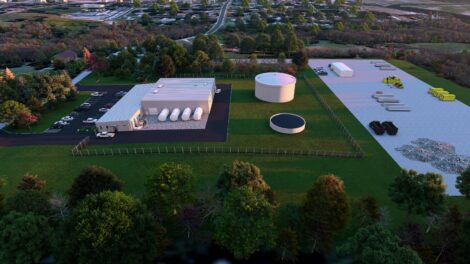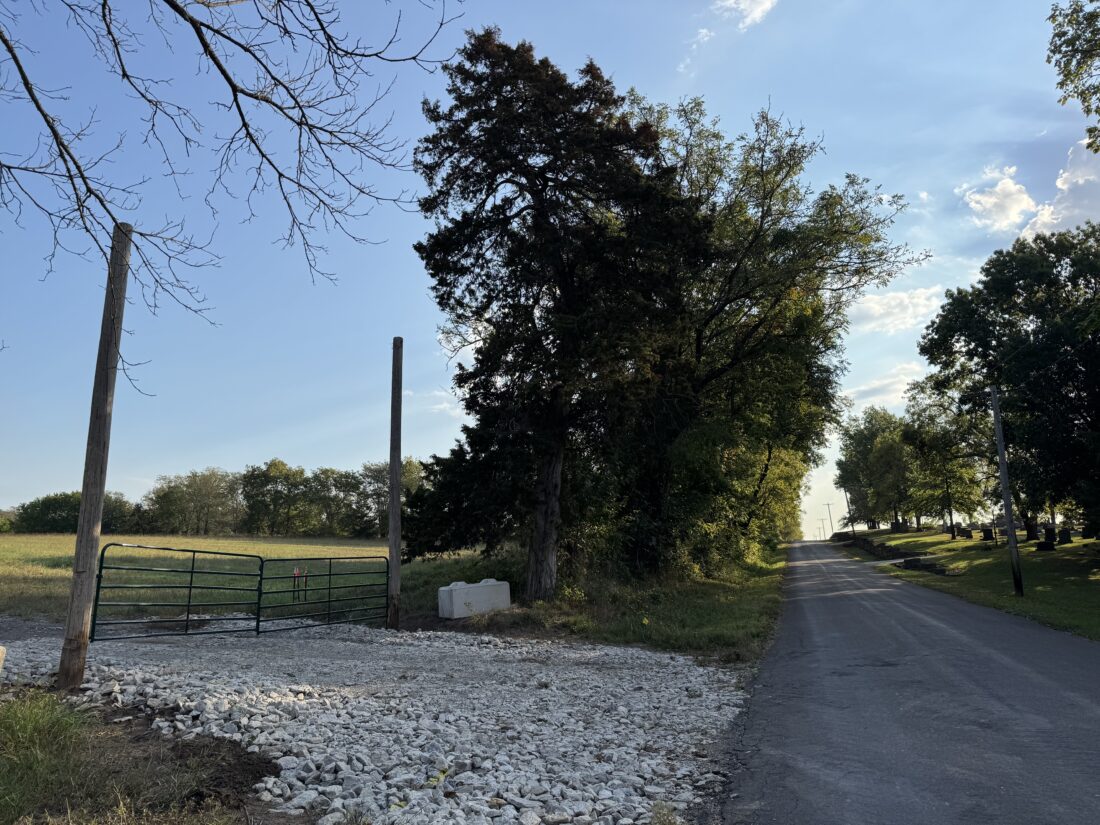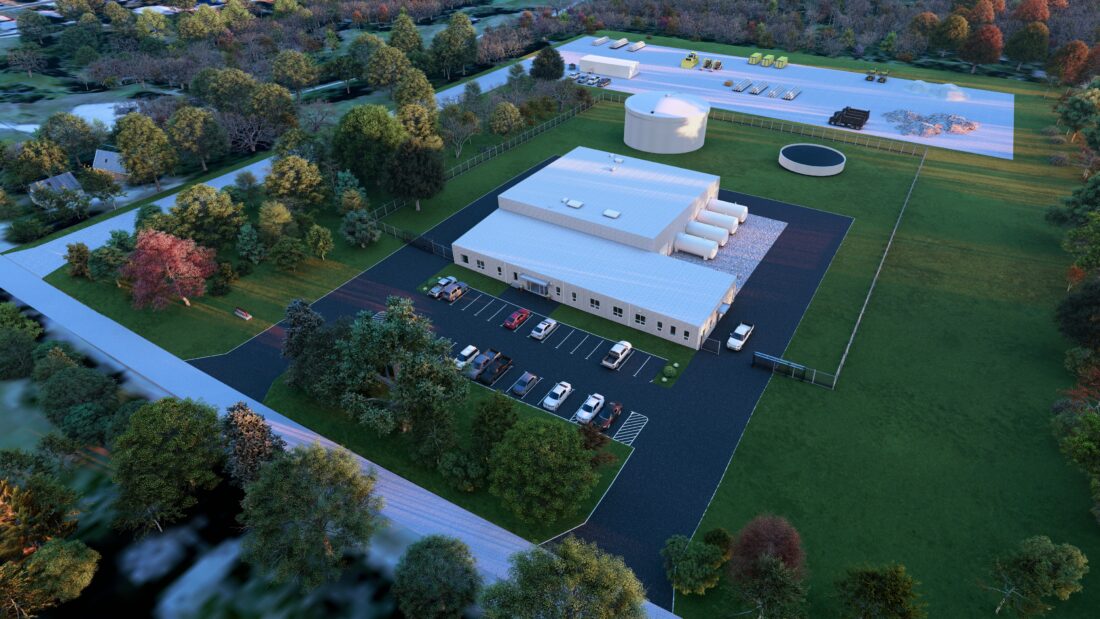City of Eudora begins work on an over $50 million project to build a new water treatment plant

photo by: Burns & McDonnel
A rendering of Eudora's new water treatment plant.
The City of Eudora is currently undergoing the first phase of a more than $50 million project to build a new water treatment plant that will replace the current aging facility.
Earlier this year, the Eudora City Commission took the first step toward the development of a new water treatment plant, infrastructure improvements and building a new 300,000-gallon water tower. In doing so, the commissioners executed a contract with Burns & McDonnell for the first phases of the project.
The city is in need of a new water treatment plant because the current plant is several decades old and is reaching the end of its useful life, the city said in a recent update on its website. In addition, the current site of the plant is within a flood zone, and it is preventing any significant improvements to the site.
The community is also expecting additional residential, commercial and industrial developments across city limits, and it will require an increase in the capacity of the water treatment plant.
The city’s current water treatment plant has the capacity to produce around 1 million to 1.2 million gallons of water per day, Eudora City Manager Zack Daniel told the Journal-World via email. In the summer months, the plant is estimated to produce around 0.8 million gallons per day.

photo by: Josie Heimsoth/Journal-World
The site for the new water treatment plant is directly north of the Eudora City Cemetery, 2223 N 1420 Road, on the east side of town.
In the city’s initial estimates, the new plant is anticipated to produce 2 million gallons per day. Eudora annexed the new water treatment plant property into city limits in 2022 after it was purchased in 2021. The property is directly north of the Eudora City Cemetery, 2223 North 1420 Road, on the east side of town.
Daniel said in the email that the first phase of the project, Phase 1A, consists of the due diligence period – including obtaining demand projections to justify the size of the plant, geotechnical information, preliminary surveying, water rights and more. This phase is estimated to cost $299,800.
Then, the city will move on to Phase 1B, which is expected to cost $550,000 and will start the initial design process along with pricing development. Daniel said both phases 1A and 1B are anticipated to take six months each.
There is another phase called Phase II, and this will include more of the design process and is when construction will begin. This phase is anticipated to take two to three years to complete, depending on several factors, such as utility relocation, additional infrastructure impacts, etc.
“(The cost of) Phase II has not been established,” Daniel said in the email. “However, the City has used an estimate of $52,137,625 when applying for funding opportunities, such as grants and outside financing assistance.”
The primary source of revenue for water utility projects is through monthly water rates that are paid by customers. With a project this size, Public Works staff is seeking external funding assistance from both the state and federal governments to minimize the impact to Eudora rate payers. The current proposed water rate adjustment for 2026 is 6.5%, and for the average Eudora water customer, this is an approximately $3 increase per month – from $46.70 to $49.74.
All of the utility rates for the City of Eudora are finalized in an annual rate resolution, which the City Commission will vote on Dec. 8, Daniel said.

photo by: Burns & McDonnel
A rendering of Eudora’s new water treatment plant.
The first phase of the project started this summer, and it involves the city gathering data, determining 20-year water demand projections, grant and loan application assistance, a floodplain analysis, a preliminary geotechnical investigation, geotechnical surveying and more.
Daniel said the city will have a better idea of how the plant will function and how much water will leave the plant once this first phase is completed. There are several different water treatment methods. For example, the current plant uses a lime-based treatment process. Lime is used primarily to adjust the pH of the water, and it softens water by removing hardness ions like calcium and magnesium.
Daniel said via email that while it isn’t final yet, the new plant may undergo a reverse osmosis treatment process – which is a more comprehensive purification process that forces water through a semi-permeable membrane to remove a wide range of contaminants.
“Once we have Phase 1A complete, we will have confirmation of what the new plant capacity will be,” Daniel said. “When Phase 1A is completed, we will know the recommended treatment process to move forward with.”
Daniel said via email that once the new plant begins operating, the old plant will be decommissioned.
“We anticipate demolishing some or parts of the plant, but this will be determined during Phase 1B and Phase II,” Daniel said.
When Phase 1A is complete, Burns & McDonnel will present a preliminary engineering report to the City Commission before moving on to Phase 1B. The report is estimated to be released to the public by the end of 2025 or early January 2026.






